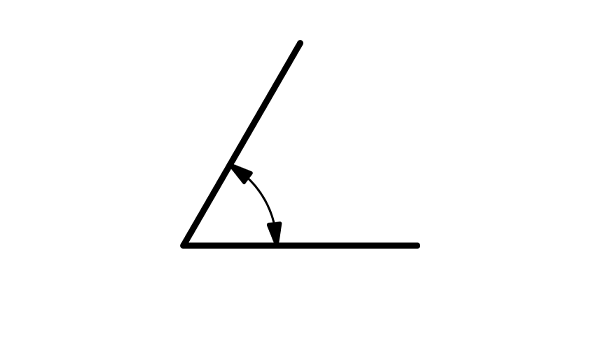Angles are an important concept in geometry, as they are used to measure the size of the space between two lines or rays that have the same endpoint. The endpoint is called the vertex of the angle, and the lines or rays are called the sides of the angle. Angles are measured in degrees, with a full circle consisting of 360 degrees. There are several types of angles, including acute angles, right angles, obtuse angles, and straight angles.
Acute angles are angles that measure less than 90 degrees. They are called acute because they are smaller than a right angle, which is 90 degrees. Acute angles are represented by a small arc between the two sides of the angle, with the vertex of the angle at the center of the arc.
Right angles are angles that measure exactly 90 degrees. They are called right angles because they form a right angle, which is a 90-degree angle. Right angles are represented by a small square at the vertex of the angle, with the sides of the angle extending from the corners of the square.
Obtuse angles are angles that measure more than 90 degrees but less than 180 degrees. They are called obtuse because they are larger than a right angle but not as large as a straight angle, which is 180 degrees. Obtuse angles are represented by a small arc between the two sides of the angle, with the vertex of the angle at the center of the arc.
Straight angles are angles that measure exactly 180 degrees. They are called straight angles because they form a straight line, which is a line that extends indefinitely in both directions. Straight angles are represented by a small arc between the two sides of the angle, with the vertex of the angle at the center of the arc.
In addition to these types of angles, there are also several other types of angles that are commonly used in geometry. These include complementary angles, supplementary angles, vertical angles, and adjacent angles.
Complementary angles are two angles that add up to 90 degrees. They are called complementary because they “complete” each other to form a right angle.
Supplementary angles are two angles that add up to 180 degrees. They are called supplementary because they “supplement” each other to form a straight angle.
Vertical angles are two angles that are opposite each other and have the same vertex. They are called vertical angles because they are “vertical” to each other, meaning they are directly across from each other.
Adjacent angles are two angles that share a side and have a common vertex. They are called adjacent because they are “next to” each other.
Understanding these different types of angles is important for working with geometric shapes and solving problems in geometry. Whether you are working with simple angles or more complex ones, a strong foundation in angle measurement and the properties of angles is essential for success in many fields.

